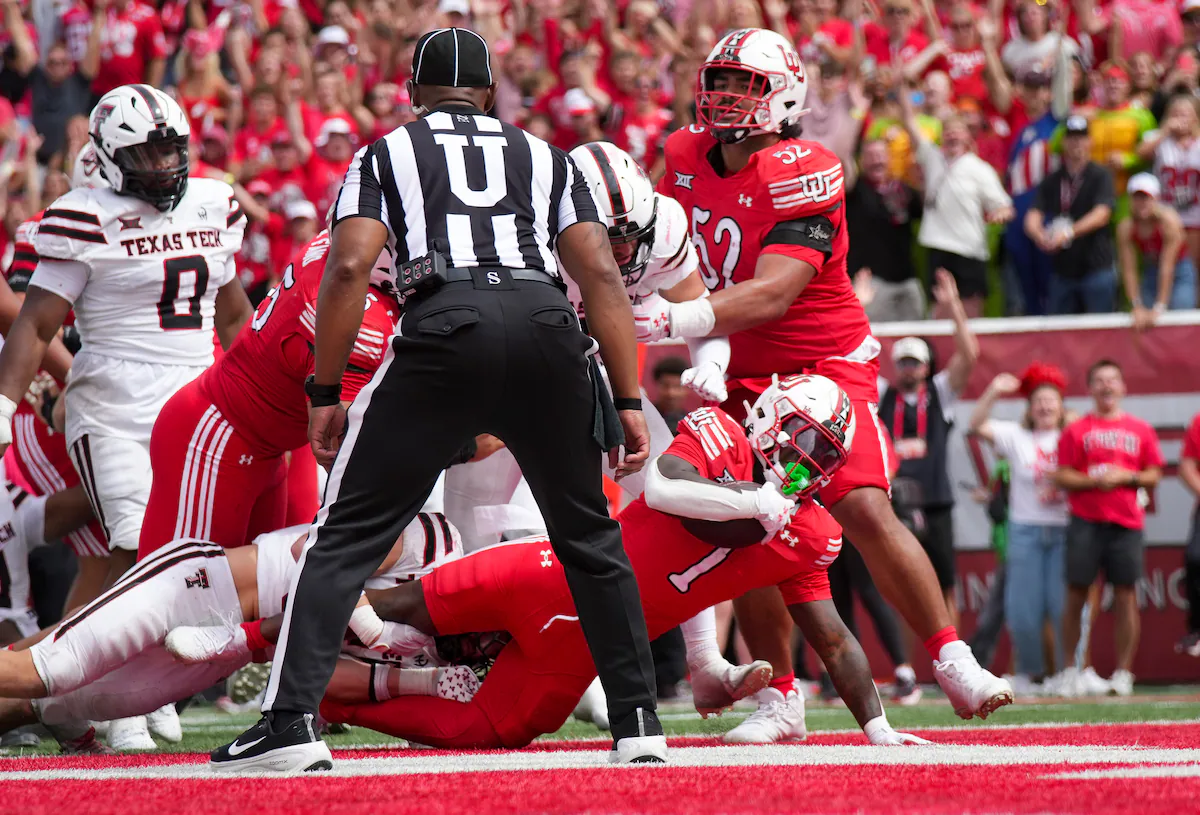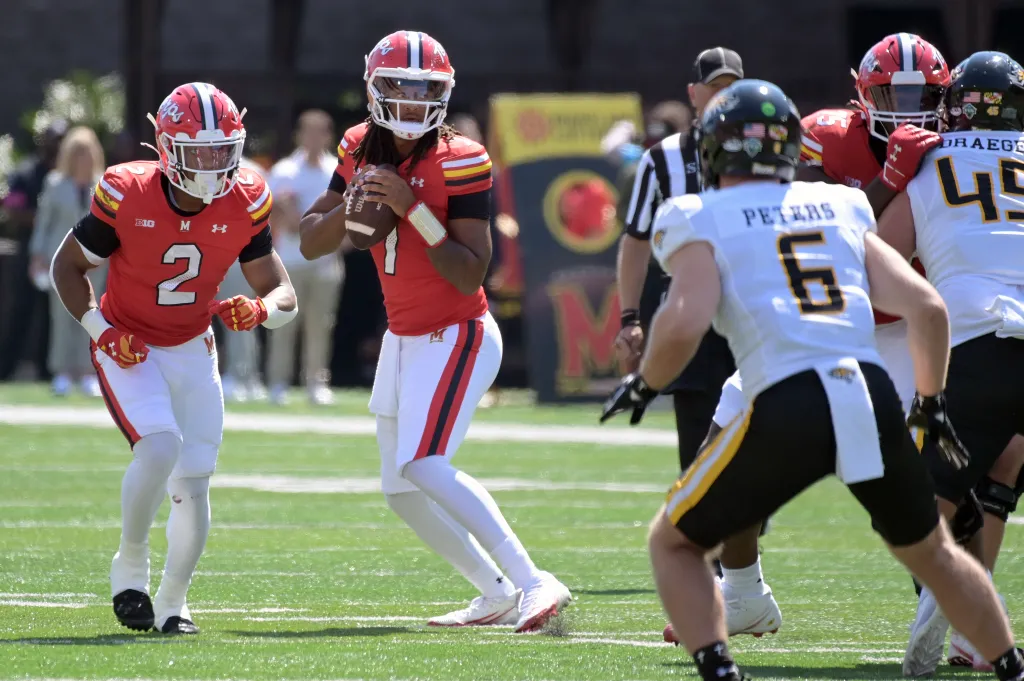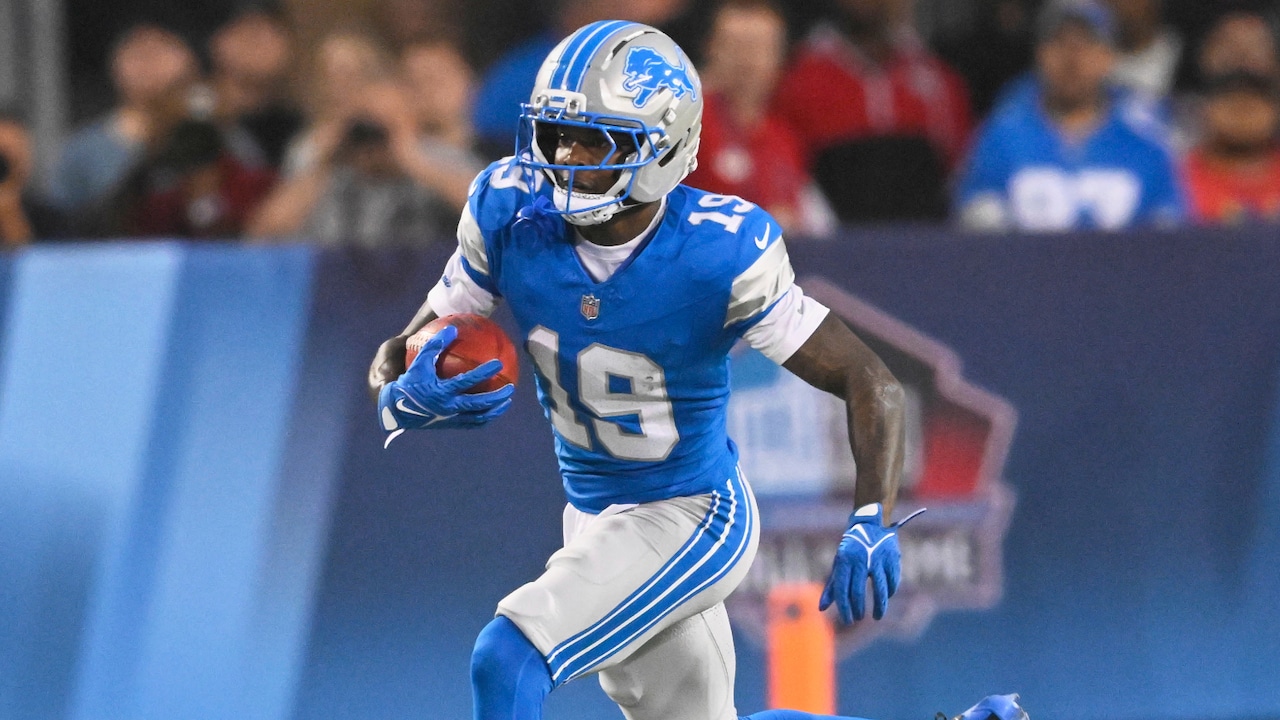
Sometimes, success can lead you astray.
Take Utah’s best drive of the season: the nine-minute, 20-play, 80-yard drive that put the game away against UCLA late last month. Utes head coach Kyle Whittingham called it a “statement drive.”
There’s an argument to be made — and I’m going to make it — that it also might have been a drive that set the wrong statement for the Utes for the rest of the season.
The average touchdown-scoring drive in college football last season took just under eight plays. Sure, a few first downs are usually required, but typically, it’s chunk plays that make up the largest portion of a team’s offensive yards on scoring drives.
Dink and dunk can work. But most of the time, drives like that are going to stall out. Offenses simply need chunk plays to eat up the yards necessary to get a touchdown.
The offense stalls came early and often against Texas Tech: Utah scored just twice on 15 drives on Saturday.
The first scoring play came on a drive that began with just 48 seconds left in the first half, when Utah drove 61 yards in seven plays for a field goal. The second, at the beginning of the fourth quarter, was a touchdown drive that went seven plays for 75 yards.
Here’s what those drives had in common: Utah passed the ball, and passed it down the field. Of the 14 plays on those drives, 12 were passes.
On the non-scoring drives, they preferred to rush the ball. Before the game was out of hand, Utah rushed the ball on first down 11 times and passed it just five times.
Even when the Utes did pass the ball on Saturday, the passes were generally quick outs, hitches or screens that ended in gains of just a few yards. On 38 dropbacks, Devon Dampier averaged just 4.2 yards per pass attempt.
In general, this is a bad idea. Take this chart from sports data engineer Akshay Easwaran, who looked at every play in college football from 2014 through 2023.
Take a look at the first-and-10 dots in the upper-left corner: On first and 10, passing the ball leads to more estimated points added (EPA) than running the ball. That’s also true about passing versus rushing from second and 6 onward. And instead, the Utes generally ran the ball in those situations Saturday.
Now look, the Utes felt coming into the game that they were a smashmouth team, being in the top 10 in rushing attempts in FBS play so far. And that’s relatively reasonable: They have two offensive linemen who could be first-round NFL draft picks, and had been extremely strong in the three games so far.
But given the Utes’ early struggles to run the ball, they should have recognized that it simply wasn’t working against Texas Tech’s stout defensive front.
The Utes instead played predictably on offense until the fourth quarter, stalling out on drive after drive.
I wish I could tell you that I’m confident that the Utes will fix this problem moving forward … but I’m not sure that I am.
After the game, Whittingham was asked about the biggest problems with the offense. “The biggest problem: turnovers. Second biggest problem: not controlling the line of scrimmage,” he said. “You cannot turn the ball over four times. You turn the ball over four times, your chances of winning are 15%.″
It is true that the Utes turned the ball over too much. But two of those turnovers came on desperation plays — one was a “arm punt” on third down that actually did a decent job of flipping the field, and the other a 4th-and-18 prayer late in the fourth. The other two came on exactly the short plays that Whittingham thinks will reduce turnovers: a run down the middle by Wayshawn Parker, and a quick pass to Ryan Davis on the left side of the field.
And while the Utes weren’t able to get a run game going, they did control the line of scrimmage in pass protection. Dampier wasn’t consistently hurried. He was only sacked once. Most of the time, he simply passed early because the play call asked him to.
In other words, I’m more worried about the five three-and-outs and the nine total stalled drives than the four turnovers.
Yes, Whittingham has had years of significant college football success playing his way — controlling time of possession through running the ball and short completions. It’s also worth noting he’s given new offensive coordinator Jason Beck control of the calls.
Whittingham, though, still has significant input on the game plan. In this game, the playcalling seemed exactly as it would have in any other year of Utah football. A good part of that is the team’s insistence on playing football in this style, rather than exploring other options. That has meant another big game in which poor offensive production lets a stout defense down.
I think it’s time to open up the playbook more, giving Dampier and company the trust they need to gain more yards for Utah’s offense.
“Dink and dunk” can be among Utah’s plans. It can’t be the only one.



